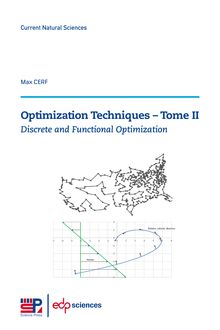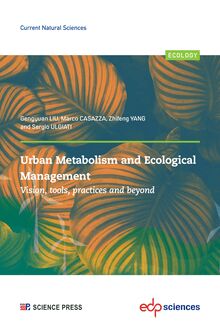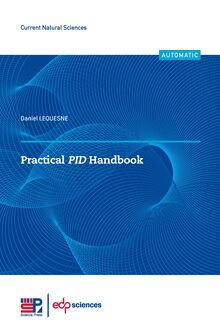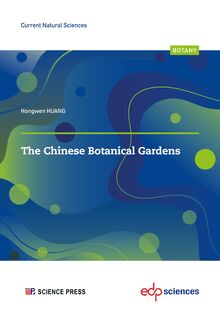-
 Univers
Univers
-
 Ebooks
Ebooks
-
 Livres audio
Livres audio
-
 Presse
Presse
-
 Podcasts
Podcasts
-
 BD
BD
-
 Documents
Documents
-
- Cours
- Révisions
- Ressources pédagogiques
- Sciences de l’éducation
- Manuels scolaires
- Langues
- Travaux de classe
- Annales de BEP
- Etudes supérieures
- Maternelle et primaire
- Fiches de lecture
- Orientation scolaire
- Méthodologie
- Corrigés de devoir
- Annales d’examens et concours
- Annales du bac
- Annales du brevet
- Rapports de stage
La lecture à portée de main
164 pages
English
Découvre YouScribe en t'inscrivant gratuitement
Je m'inscrisBioinspired Antifouling Surfaces , livre ebook
Découvre YouScribe en t'inscrivant gratuitement
Je m'inscris
Obtenez un accès à la bibliothèque pour le consulter en ligne
En savoir plus
En savoir plus
164 pages
English
Obtenez un accès à la bibliothèque pour le consulter en ligne
En savoir plus
En savoir plus

Description
Biofouling on marine vessels and bacterial growth on biomedical surfaces bring huge economic loss to our society. Traditional antifouling and antibacterial surfaces contain toxic substances or antibiotics, which can threaten the environments and raise the risk of inducing drug-resistance strains. In the long-term evolution process of natural organisms, they present multiple functions through the joint action of their own morphology, structure, and other factors to achieve the maximum adaptation to the environment. Many of natural organisms have developed antifouling and antibacterial strategies. Inspired by these strategies, lots of artificial surfaces have been fabricated and tested. They are highly efficient and environmental-compatibility, and they have potential to achieve enhanced antifouling capabilities and desirable properties by combining the characteristics of novel materials. This book focuses on the research and application of bioinspired antifouling surfaces in the two major fields—marine industry and biomedical field. It is intended for mechanical manufacturing and biomedical researchers, enthusiasts and students.
Sujets
Informations
| Publié par | EDP Sciences |
| Date de parution | 23 février 2023 |
| Nombre de lectures | 0 |
| EAN13 | 9782759829422 |
| Langue | English |
| Poids de l'ouvrage | 24 Mo |
Informations légales : prix de location à la page 1,1600€. Cette information est donnée uniquement à titre indicatif conformément à la législation en vigueur.
Extrait
9 782759 829415
Current Natural Sciences
BIONICS & APPLICATIONS
Limei TIAN, Jie ZHAO, Huichao JIN, Wei BING and Rujian JIANG
BioinspiredAntifoulingSurfaces
From Marine Applications to Biomedical Protections
BIONICS & APPLICATIONS
ISBN : 978-2-7598-2941-5
9 782759 829415
Current Natural Sciences
Bioinspired Antifouling Surfaces From Marine Applications to Biomedical Protections
Limei TIAN, Jie ZHAO, Huichao JIN, Wei BING and Rujian JIANG
Biofouling on marine vessels and bacterial growth on biomedical surfaces bring huge economic loss to our society. Traditional antifouling and antibacterial surfaces contain toxic substances or antibiotics, which can threaten the environments and raise the risk of inducing drug-resistance strains. In the long-term evolution process of natural organisms, they present multiple functions through the joint action of their own morphology, structure, and other factors to achieve the maximum adaptation to the environment. Many of natural organisms have developed antifouling and antibacterial strategies. Inspired by these strategies, lots of artificial surfaces have been fabricated and tested. They are highly efficient and environmental-compatibility, and they have potential to achieve enhanced antifouling capabilities and desirable properties by combining the characteristics of novel materials. This book focuses on the research and application of bioinspired antifouling surfaces in the two major fields—marine industry and biomedical field.
This book is intended for mechanical manufacturing and biomedical researchers, enthusiasts and students.
www.edpsciences.org
Current Natural Sciences
Limei TIAN, Jie ZHAO, Huichao JIN, Wei BING and Rujian JIANG
Bioinspired Antifouling Surfaces
From Marine Applications to Biomedical Protections
Printed in France
EDP Sciences–ISBN(print): 9782759829415–ISBN(ebook): 9782759829422 DOI: 10.1051/9782759829415
All rights relative to translation, adaptation and reproduction by any means whatsoever are reserved, worldwide. In accordance with the terms of paragraphs 2 and 3 of Article 41 of the French Act dated March 11, 1957,“copies or reproductions reserved strictly for private use and not intended for collective use”and, on the other hand, analyses and short quotations for example or illustrative purposes, are allowed. Otherwise,“any representation or reproduction–whether in full or in part–without the consent of the author or of his successors or assigns, is unlawful”(Article 40, paragraph 1). Any representation or reproduction, by any means whatsoever, will therefore be deemed an infringement of copyright punishable under Articles 425 and following of the French Penal Code.
The printed edition is not for sale in Chinese mainland.
Science Press, EDP Sciences, 2023
Contents
Foreword. . . . . . . . . . . . . . . . . . . . . . . . . . . . . . . . . . . . . . . . . . . . . . . . . . .
CHAPTER 1 Introduction to Biofouling and Bionics. . . . . . . . . . . . . . . . . . . . . . . . . . . . . 1.1 Biofouling. . . . . . . . . . . . . . . . . . . . . . . . . . . . . . . . . . . . . . . . . . . . . . 1.2 Bionics. . . . . . . . . . . . . . . . . . . . . . . . . . . . . . . . . . . . . . . . . . . . . . . . 1.2.1 Definition. . . . . . . . . . . . . . . . . . . . . . . . . . . . . . . . . . . . . . . . . 1.2.2 Antifouling Strategies Developed by Nature. . . . . . . . . . . . . . . 1.2.3 Materials Science and Manufacturing Techniques. . . . . . . . . . . References. . . . . . . . . . . . . . . . . . . . . . . . . . . . . . . . . . . . . . . . . . . . . . . . . .
CHAPTER 2 Marine Biofouling and Surface Properties. . . . . . . . . . . . . . . . . . . . . . . . . . . 2.1 Marine Biofouling. . . . . . . . . . . . . . . . . . . . . . . . . . . . . . . . . . . . . . . . 2.2 Marine Biofouling Process. . . . . . . . . . . . . . . . . . . . . . . . . . . . . . . . . . 2.3 Fouling Organisms and Their Adhesion Behavior. . . . . . . . . . . . . . . . 2.3.1 Species of Fouling Organisms. . . . . . . . . . . . . . . . . . . . . . . . . . 2.3.2 Adhesion Behavior of Fouling Organisms. . . . . . . . . . . . . . . . . 2.4 BiofoulingRelated Costs. . . . . . . . . . . . . . . . . . . . . . . . . . . . . . . . . . . 2.5 History of Antifouling Coatings. . . . . . . . . . . . . . . . . . . . . . . . . . . . . . 2.6 Basics of Wettability/Surface Energy. . . . . . . . . . . . . . . . . . . . . . . . . 2.6.1 Surface Wettability. . . . . . . . . . . . . . . . . . . . . . . . . . . . . . . . . 2.6.2 Solid Surface Energy. . . . . . . . . . . . . . . . . . . . . . . . . . . . . . . . References. . . . . . . . . . . . . . . . . . . . . . . . . . . . . . . . . . . . . . . . . . . . . . . . . .
CHAPTER 3 Bioinspired Textured Surfaces for Marine Antifouling. . . . . . . . . . . . . . . . . . 3.1 Introduction of Textured Surfaces. . . . . . . . . . . . . . . . . . . . . . . . . . . . 3.1.1 Lotus Leaf. . . . . . . . . . . . . . . . . . . . . . . . . . . . . . . . . . . . . . . . 3.1.2 Rice Leaf. . . . . . . . . . . . . . . . . . . . . . . . . . . . . . . . . . . . . . . . . 3.1.3 Butterfly Wings. . . . . . . . . . . . . . . . . . . . . . . . . . . . . . . . . . . . 3.1.4 Mosquito Eyes. . . . . . . . . . . . . . . . . . . . . . . . . . . . . . . . . . . . .
VII
1 1 3 3 3 4 6
9 9 10 11 11 12 14 14 15 16 18 20
23 23 23 24 24 24
IV
Contents
3.2 Design Principles of Textured Surfaces. . . . . . . . . . . . . . . . . . . . . . . . 3.2.1 Early Attempts. . . . . . . . . . . . . . . . . . . . . . . . . . . . . . . . . . . . 3.2.2 Engineered Roughness Index. . . . . . . . . . . . . . . . . . . . . . . . . . 3.2.3 Surface Energetic Attachment. . . . . . . . . . . . . . . . . . . . . . . . . 3.2.4 Contact Mechanics Theory. . . . . . . . . . . . . . . . . . . . . . . . . . . . 3.3 Challenges and Solutions. . . . . . . . . . . . . . . . . . . . . . . . . . . . . . . . . . . References. . . . . . . . . . . . . . . . . . . . . . . . . . . . . . . . . . . . . . . . . . . . . . . . . .
CHAPTER 4 Natural Antifoulants for Antifouling Surfaces. . . . . . . . . . . . . . . . . . . . . . . . 4.1 Introduction. . . . . . . . . . . . . . . . . . . . . . . . . . . . . . . . . . . . . . . . . . . . 4.2 Antifoulants from Marine Organisms. . . . . . . . . . . . . . . . . . . . . . . . . . 4.3 Antifoulants from Terrestrial Plants. . . . . . . . . . . . . . . . . . . . . . . . . . 4.4 Synthetic Analogues. . . . . . . . . . . . . . . . . . . . . . . . . . . . . . . . . . . . . . 4.4.1 Dihydrostilbenes. . . . . . . . . . . . . . . . . . . . . . . . . . . . . . . . . . . 4.4.2 Capsaicin Analogs. . . . . . . . . . . . . . . . . . . . . . . . . . . . . . . . . . 4.4.3 Indole Derivatives. . . . . . . . . . . . . . . . . . . . . . . . . . . . . . . . . . References. . . . . . . . . . . . . . . . . . . . . . . . . . . . . . . . . . . . . . . . . . . . . . . . . .
CHAPTER 5 Other NatureInspired Marine Antifouling Surfaces. . . . . . . . . . . . . . . . . . . . 5.1 Introduction. . . . . . . . . . . . . . . . . . . . . . . . . . . . . . . . . . . . . . . . . . . . 5.2 Natural HydrogelInspired Antifouling Surfaces. . . . . . . . . . . . . . . . . . 5.2.1 Introduction. . . . . . . . . . . . . . . . . . . . . . . . . . . . . . . . . . . . . . . 5.2.2 Current Hydrogels for Marine Antifouling. . . . . . . . . . . . . . . . 5.3 Slippery LiquidInfused Porous Surfaces (SLIPS). . . . . . . . . . . . . . . . 5.3.1 Natural SLIPS. . . . . . . . . . . . . . . . . . . . . . . . . . . . . . . . . . . . . 5.3.2 SLIPS for Antifouling. . . . . . . . . . . . . . . . . . . . . . . . . . . . . . . 5.4 Bioinspired Dynamic Surfaces. . . . . . . . . . . . . . . . . . . . . . . . . . . . . . . 5.4.1 Renewable Surfaces. . . . . . . . . . . . . . . . . . . . . . . . . . . . . . . . . 5.4.2 Unstable Surfaces. . . . . . . . . . . . . . . . . . . . . . . . . . . . . . . . . . . References. . . . . . . . . . . . . . . . . . . . . . . . . . . . . . . . . . . . . . . . . . . . . . . . . .
CHAPTER 6 Bioinspired Medical Surfaces. . . . . . . . . . . . . . . . . . . . . . . . . . . . . . . . . . . . . 6.1 Bacterial Infection and Traditional Antibacterial Strategies. . . . . . . . . 6.1.1 Antibiotics and Physiological Activity. . . . . . . . . . . . . . . . . . . 6.1.2 Biofilm Infections. . . . . . . . . . . . . . . . . . . . . . . . . . . . . . . . . . . 6.2 Traditional Medical Antibacterial and Antifouling Methods. . . . . . . . 6.2.1 Causes of Drug Resistance. . . . . . . . . . . . . . . . . . . . . . . . . . . . 6.2.2 Manage and Prevent Drug Resistance. . . . . . . . . . . . . . . . . . . 6.3 Bioinspired Medical Antibacterial and Antifouling Methods. . . . . . . . References. . . . . . . . . . . . . . . . . . . . . . . . . . . . . . . . . . . . . . . . . . . . . . . . . .
26 26 27 28 29 31 33
37 37 37 40 41 42 43 44 44
47 47 47 47 48 52 52 52 55 55 58 60
65 65 65 66 67 68 71 72 75
Contents
CHAPTER 7 Bioinspired SLIPS for Medical Antifouling. . . . . . . . . . . . . . . . . . . . . . . . . . 7.1 Introduction. . . . . . . . . . . . . . . . . . . . . . . . . . . . . . . . . . . . . . . . . . . . 7.2 Bioinspired Prototype of LubricantInfused Slippery Surfaces. . . . . . . 7.3 Fundamental Principle and Liquid Repellency Mechanism of SLIPS. . 7.4 Fabrication Strategies of SLIPS for Antifouling Applications. . . . . . . . 7.5 Conclusions and Outlook. . . . . . . . . . . . . . . . . . . . . . . . . . . . . . . . . . References. . . . . . . . . . . . . . . . . . . . . . . . . . . . . . . . . . . . . . . . . . . . . . . . . .
CHAPTER 8 Superhydrophobic Surfaces for Medical Antifouling. . . . . . . . . . . . . . . . . . . . 8.1 Introduction. . . . . . . . . . . . . . . . . . . . . . . . . . . . . . . . . . . . . . . . . . . . 8.2 Fabrication Technologies of Superhydrophobic Textiles. . . . . . . . . . . . 8.2.1 BottomUp Fabrication. . . . . . . . . . . . . . . . . . . . . . . . . . . . . . 8.2.2 TopDown Fabrication. . . . . . . . . . . . . . . . . . . . . . . . . . . . . . . 8.3 Conclusions and Outlooks. . . . . . . . . . . . . . . . . . . . . . . . . . . . . . . . . . References. . . . . . . . . . . . . . . . . . . . . . . . . . . . . . . . . . . . . . . . . . . . . . . . . .
CHAPTER 9 Bioinspired Mechanical Bactericidal Surfaces. . . . . . . . . . . . . . . . . . . . . . . . 9.1 Naturally Occurring Nanostructured Bactericidal Surfaces. . . . . . . . . 9.2 Bactericidal Mechanism. . . . . . . . . . . . . . . . . . . . . . . . . . . . . . . . . . . 9.3 Artificial Mechanical Bactericidal Surfaces and Fabricating Technologies. . . . . . . . . . . . . . . . . . . . . . . . . . . . . . . . . . . . . . . . . . . . 9.4 Conclusions and Outlook. . . . . . . . . . . . . . . . . . . . . . . . . . . . . . . . . . References. . . . . . . . . . . . . . . . . . . . . . . . . . . . . . . . . . . . . . . . . . . . . . . . . .
CHAPTER 10 Bioinspired Medical DrugDelivery Surfaces. . . . . . . . . . . . . . . . . . . . . . . . . 10.1 The Inspiration and Development of DrugDelivery Surfaces. . . . . . . 10.2 Types of Bioinspired DrugDelivery Medical Surfaces. . . . . . . . . . . . 10.2.1 Bioinspired Hydrogels. . . . . . . . . . . . . . . . . . . . . . . . . . . . . . 10.2.2 Bioinspired Polymeric Carriers. . . . . . . . . . . . . . . . . . . . . . . 10.2.3 Bioinspired Nanostructures and Surfaces. . . . . . . . . . . . . . . . 10.2.4 Other Bioinspired DrugDelivery Surfaces. . . . . . . . . . . . . . . References. . . . . . . . . . . . . . . . . . . . . . . . . . . . . . . . . . . . . . . . . . . . . . . . . .
Conclusion. . . . . . . . . . . . . . . . . . . . . . . . . . . . . . . . . . . . . . . . . . . . . . . . . .
V
79 79 79 83 86 101 101
105 105 106 106 112 115 116
119 119 125
129 136 137
141 141 143 143 145 146 146 149
153
Foreword
Biofouling is the gradual accumulation of fouling organisms (such as bacteria, diatoms, and barnacles) on wetted surfaces. Back in 1943, Zobell first discussed biofilm formation and related corrosion on solid surfaces. Since then, the negative impacts, the formation mechanism, and the solutions of biofouling have been studied by many researchers, and it became the focus of extensive research in recent years. The growth of fouling organisms on marine vessels increases drag and accelerates corrosion, which can lead to high fuel consumption and excessive maintenance costs. Marine biofouling consumes billions of dollars and causes environmental disasters every year in the global shipping industry. Excessive fuel consumption increases the emissions of greenhouse gas (e.g., CO2), harmful compounds (e.g., NOxand SOx), and atmospheric pollutants. CO2can contribute to the global warming trend and NOxand SOxcause acid rain and soil damage. The atmospheric pollutants in the air increase the health risk of human beings. These harmful emissions cause approxi mately 60 000 deaths globally and€200 billion in losses every year. Historically, conventional antifouling coatings were incorporated with toxic substances, which have been banned in many countries because of their toxicity to the marine envi ronment. Hence, the development of effective, environmentally friendly, and lowcost antifouling coatings is necessitated. The formation of biofilm on biomedical surfaces and public facilities also leads to biofouling, which can bring bacterial infection risk to patients and public health. The application of antibiotics can reduce the suffering of human beings caused by bacterial infections. However, the optimism of antibiotic application was weakened by the discovery of drugresistant strains. Therefore, it is necessary to construct an effective and antibioticsfree antibiofouling and antibacterial surface coating in medical settings to prevent bacterial adhesion and settlement, reducing the spread of infections.
DOI: 10.1051/9782759829415.c901 Science Press, EDP Sciences, 2023
VIII
Foreword
In the longterm evolution process of natural organisms, they present multiple functions through the joint action of their own morphology, structure, and other factors to achieve maximum adaptation to the environment. Many natural organ isms have developed antifouling strategies. Inspired by these strategies, lots of artificial surfaces have been fabricated and tested. They are highly efficient and environmentalcompatibility and they have the potential to achieve enhanced antifouling capabilities and desirable properties by combining the characteristics of novel materials. This book will focus on the application of bioinspired antifouling surfaces in two major fields—the marine industry (chapters2–5) and the biomedical field (chapters6–10). We expect this book not only to satisfy scientific curiosity but also contribute to the design and application of bioinspired antifouling surfaces.
Limei TIAN Jilin University Changchun, China
-
 Univers
Univers
-
 Ebooks
Ebooks
-
 Livres audio
Livres audio
-
 Presse
Presse
-
 Podcasts
Podcasts
-
 BD
BD
-
 Documents
Documents
-
Jeunesse
-
Littérature
-
Ressources professionnelles
-
Santé et bien-être
-
Savoirs
-
Education
-
Loisirs et hobbies
-
Art, musique et cinéma
-
Actualité et débat de société
-
Jeunesse
-
Littérature
-
Ressources professionnelles
-
Santé et bien-être
-
Savoirs
-
Education
-
Loisirs et hobbies
-
Art, musique et cinéma
-
Actualité et débat de société
-
Actualités
-
Lifestyle
-
Presse jeunesse
-
Presse professionnelle
-
Pratique
-
Presse sportive
-
Presse internationale
-
Culture & Médias
-
Action et Aventures
-
Science-fiction et Fantasy
-
Société
-
Jeunesse
-
Littérature
-
Ressources professionnelles
-
Santé et bien-être
-
Savoirs
-
Education
-
Loisirs et hobbies
-
Art, musique et cinéma
-
Actualité et débat de société
- Cours
- Révisions
- Ressources pédagogiques
- Sciences de l’éducation
- Manuels scolaires
- Langues
- Travaux de classe
- Annales de BEP
- Etudes supérieures
- Maternelle et primaire
- Fiches de lecture
- Orientation scolaire
- Méthodologie
- Corrigés de devoir
- Annales d’examens et concours
- Annales du bac
- Annales du brevet
- Rapports de stage
Signaler un problème
YouScribe
Le catalogue
Le service
© 2010-2024 YouScribe




















